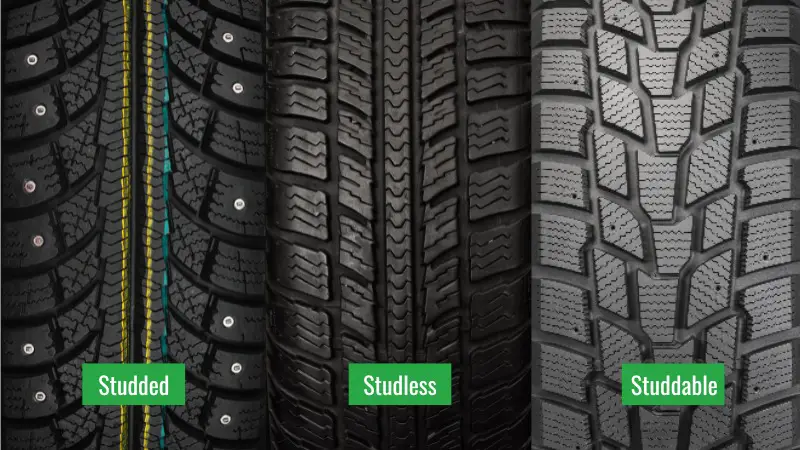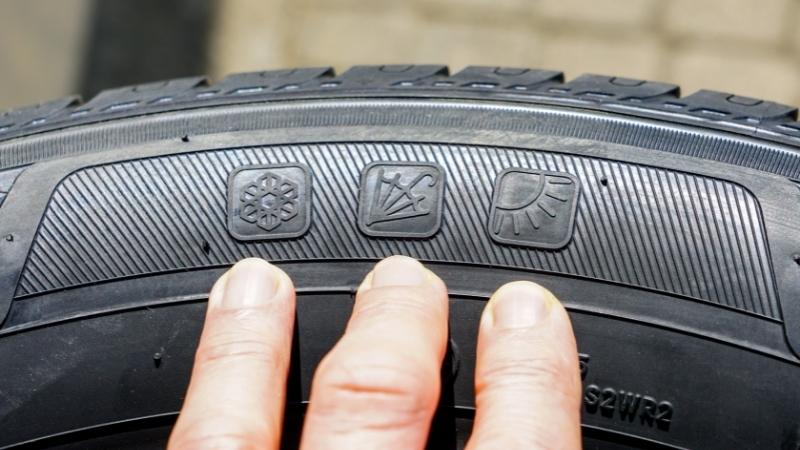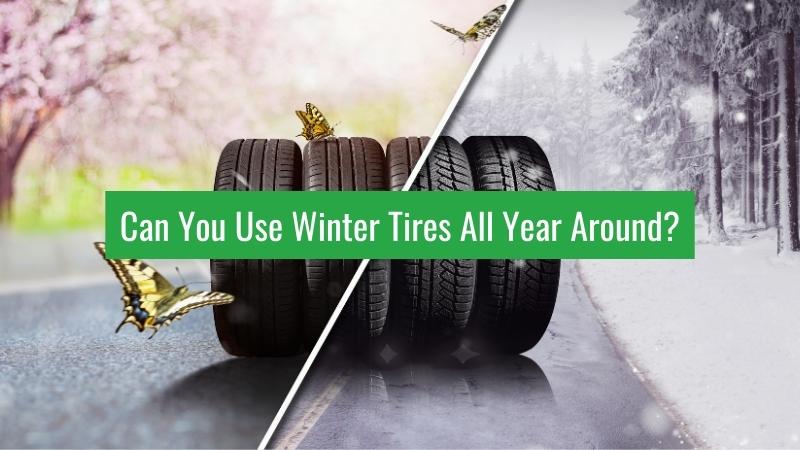When it comes to tire choices, you might be wondering if it’s possible to use winter tires all year round. Winter tires, specifically designed for cold temperatures and winter precipitation, offer advantages during the snowy and icy months.
However, as the seasons change, it is important to consider the impacts of using winter tires outside their intended conditions.
Using winter tires throughout the year is not recommended, as they wear down more quickly when driven on warm and dry pavement due to their flexible tread rubber composition. Driving with winter tires in warmer months can lead to decreased performance, reduced fuel economy, and a shorter tire lifespan.
Understanding the unique features and technology of winter tires is essential to making an informed decision about when to use them.
Ultimately, it is up to you to weigh the pros and cons and determine if using winter tires all year is a suitable choice for your driving needs.
Understanding Winter Tires
In this section, let’s dive deeper into the features of winter tires that make them suitable for cold temperatures and winter precipitation.
Tread Patterns
Winter tires have unique tread patterns that are designed to provide better traction on snow and ice. The deep, wide treads create multiple biting edges to grip onto snowy or icy surfaces.
The high traction treads also help to channel slush and water away from the contact patch, further improving the grip of the tire in winter conditions.
Rubber Compounds
Winter tires utilize specialized rubber compounds to maintain their flexibility and performance in cold temperatures. As the temperature drops, conventional tire compounds tend to harden and lose grip.
The rubber compounds used in winter tires remain flexible and soft even in frigid temperatures, providing the necessary traction and control for safe driving.
Studded vs. Non-Studded

There are two primary types of winter tires: studded and non-studded. Both have their advantages and drawbacks, which you should consider when deciding which to choose for your vehicle.
Studded Winter Tires
Studded winter tires feature metal studs embedded in the tread. These studs provide superior grip on icy roads. However, studded tires can cause excessive road wear and are banned or restricted in some areas due to the damage they can cause to the pavement.
Non-Studded Winter Tires
Non-studded winter tires rely on their unique tread patterns and rubber compounds to provide traction without the use of studs. These tires are more versatile than studded tires, as they can be used in areas where studded tires are not allowed or when driving on clear roads during the winter season.
Reasons Why You Shouldn’t Use Winter Tires All Year Round
Using winter tires all year round may seem convenient, but there are a few reasons why it’s not a good idea for your vehicle’s performance and your wallet.
Firstly, winter tires have a more flexible tread rubber, which is designed for better traction in cold, harsh weather conditions. When used in warm and dry conditions, this pliable tread rubber wears down more quickly than that of all-season or summer tires.
This leads to faster wear and a reduced lifespan for your winter tires, resulting in increased costs for tire replacement.
Another drawback of using winter tires all year round is the negative impact on your vehicle’s performance. Winter tires are specifically designed for colder temperatures and are not optimized for handling and braking on warm, dry pavement.
As a result, your vehicle’s cornering and braking performance will be reduced, which can pose a safety risk, especially during high-speed driving or emergency situations.
Furthermore, using winter tires in the warmer months can lead to decreased fuel efficiency. The softer rubber compounds used in winter tires generate more rolling resistance, which translates to higher fuel consumption.
Switching to all-season or summer tires during warmer months can save you money on gas and help reduce your carbon footprint.
In summary, using winter tires all year round may result in faster tire wear, reduced vehicle performance, and decreased fuel efficiency.
To ensure optimal performance and safety, it’s best to switch to all-season or summer tires when temperatures rise, and reserve your winter tires for their intended purpose – providing enhanced grip and control in cold, snowy, and icy conditions.
Advantages of Using Winter Tires Year-Round
While it is not generally recommended, there are a few advantages to using winter tires year-round. One of the benefits is the enhanced traction on slippery roads.
Winter tires are designed specifically to handle snow and ice, so if you live in an area where these conditions persist, using them throughout the year can provide you with reliable grip on the road.
Another advantage is the improved braking performance in cold temperatures. Winter tires have specialized tread compounds that remain flexible in low temperature conditions, allowing for better contact with the road and a shorter stopping distance when compared to all-season tires. This can be especially beneficial when driving on icy or snow-covered roads.
Having a single set of tires for the entire year can also save you time and the hassle of changing tires twice a year. Tire changeovers can be time-consuming and require careful planning to ensure they are completed before the cold weather sets in. By using winter tires year-round, you can avoid this inconvenience altogether.
Lastly, using winter tires throughout the year can lead to cost savings in certain situations. If your vehicle is nearing the end of its life and you don’t plan on keeping it for much longer, continuing to use winter tires until the car is no longer in service could save you money on purchasing a new set of all-season tires.
This, however, should be weighed against the potential drawbacks and increased wear of using winter tires during warmer months.
Alternatives to Winter Tires

If you’re considering using winter tires all year round, you might want to explore some alternatives that provide better performance and longevity. While winter tires are excellent at providing traction in colder temperatures and icy conditions, they tend to wear down quickly in warmer conditions.
One alternative option you can consider is all-season tires. These tires are designed to provide a balanced performance in a wide range of weather conditions, including mild wet or dry roads.
All-season tires utilize a tread compound that has enough flexibility for cold temperatures while remaining durable in warmer climates. This makes them a more practical choice for year-round use, especially in milder climates. A notable example of such tires is tires with WeatherGrip technology.
Another option to consider is the use of summer tires or 3-season tires during the warmer months. These tires are designed to provide optimal grip, handling, and fuel efficiency in warm and dry conditions.
Summer tires have a harder compound compared to winter tires, which makes them more suitable for temperatures above 7°C. When temperatures drop below this threshold, it’s advisable to switch back to winter tires for improved traction and safety.
Lastly, you could opt for a tire rotation schedule. This involves regularly changing out your tires based on the season, ensuring optimal tire performance and longevity.
By rotating your tires, you can match the appropriate tire type to the specific weather conditions, maximize their lifespan, and maintain the best grip and safety on the road.
Conclusion
Using winter tires all year round is not recommended, as they are specifically designed for use during the cold season. The flexible tread rubber of winter tires allows for better traction in winter conditions, but will wear down faster on warm, dry pavement, negatively impacting their lifespan and performance.
While you might think driving with winter tires during warmer months would improve fuel economy, it is actually the opposite. Your vehicle’s performance and fuel economy may suffer as a result. It is generally best to switch to all-season or summer tires once temperatures consistently reach above 45º F.
To ensure optimal tire performance and safety, it’s crucial to use the appropriate tires for each season. In summary, using winter tires year round can lead to decreased performance, fuel economy, and tire lifespan.
Rather than risking these negative effects, invest in a set of all-season or summer tires for the warmer months and keep your winter tires reserved for when they’re needed most.
Hi, my name is Niklas, the head content creator & CEO of Whirling Wheelz. I am very interested in vehicles of all kinds, mainly cars. I have a car mechanics degree from high school and a big hobby of mine is to follow the WRC (World Rally Championship) both online and through travel.


